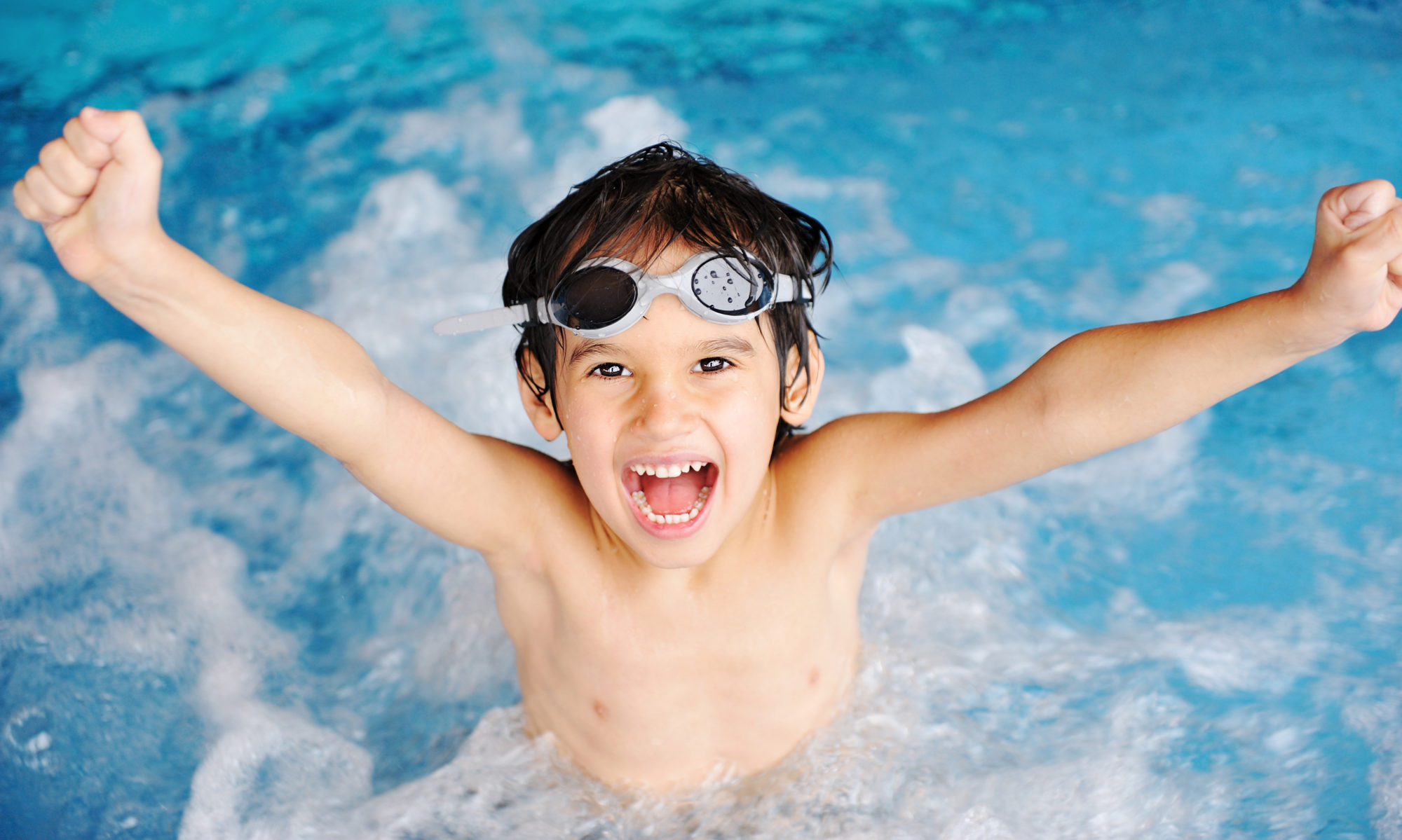It’s hard to imagine that someday the kid who hasn’t even put his face underwater in the bathtub could be stepping onto the podium to accept an Olympic gold. Safety and fun are the most likely reasons for teaching your child to swim, but just for kicks, let’s look at what goes into being a world-class swimmer.
I’m not talking about the obvious thousands of hours of practice and high-tech equipment that athletes turn into seconds shaved from their personal records, and I’m not talking about the minute details like how great swimmers sweat and spread their fingers.
I’m talking about the basics: the swimmer’s body.
What does the world-class swimmer’s body look like? Tall and lean with long arms and a long torso, big hands, and big feet. Does that sound like your child’s body? Probably not. So what are the differences that affect how he learns to swim?
4 Things about Your Kid’s Body That Affect How He Learns to Swim
1. Head Size
If he’s anything like the average, your child’s head is large compared to the rest of his body. In our early years, our limbs grow more slowly than the head and the rest of the body.
2. Lung Capacity
Kids also have less lung capacity than adults, not only overall but also relative to body mass. The ratio of total lung capacity to BMI in an average seven-year-old boy might be 1:10. In a seventeen-year-old, 1:2.5 is typical.
3. Body Mass
A kid’s body mass isn’t like an adult’s. They have a much larger surface area to mass ratio, which means they lose body heat more quickly. Often their body fat percentage is much lower than an adult’s, and this makes them less buoyant.
Their lower lung capacity and body fat percentage make floating much tougher for kids than it is for adults. They just aren’t as buoyant.
4. Rest and Recovery Needs
Those growing bodies also mean that kids need more rest than adults do. They go hard and crash hard. Rest and recovery time are important.
The better you understand what your kids are experiencing, the easier and more effective your teaching will be. Children’s bodies are different than adults’ bodies. Understanding these differences will help you to put yourself in your child’s place and respond to his needs. Responding to your kids’ needs will help to make the learning process fun and effective for all of you.
